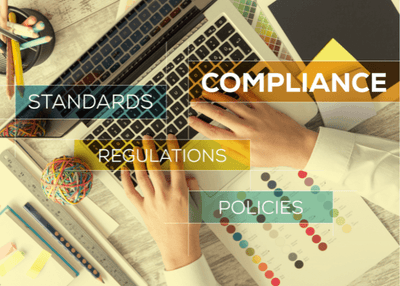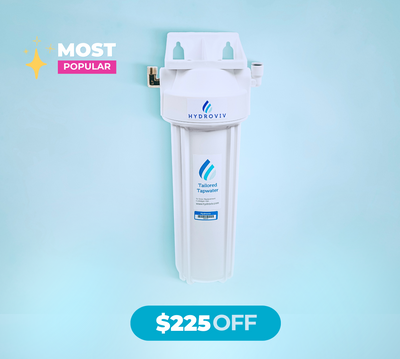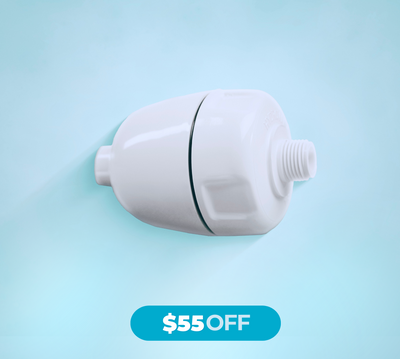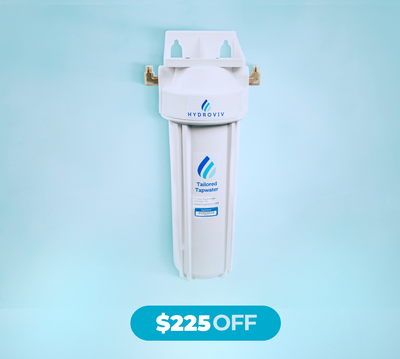Municipal Drinking Water Compliance: What You Need To Know
RSS
Analies Dyjak and Ernesto Esquivel | Water Nerds
Often times, when a public water system becomes impaired a municipality responds by claiming that they’re “in compliance.” Municipalities may in fact be in compliance with federally regulated contaminants, but fail to mention the various harmful unregulated contaminants that are in their water systems. So what does being in compliance with water quality standards mean for your water?
The Clean Water Act and Safe Drinking Water Act have resulted in the regulation of various contaminants found in water sources all across the nation. Many of these regulations limit the concentration of harmful contaminants found in our water. Although legally these levels are labeled as safe, the sheer presence of some of these contaminants is harmful to human health. This puts many people at risk for health issues. In addition, there are plenty more contaminants that are not regulated in municipal drinking water treatment. This makes it harder to hold entities accountable for disposing these unregulated contaminants into water sources.
When a public water system comes under scrutiny for water quality issues, the municipality often responds by claiming that they’re “in full compliance with federal standards.” Unfortunately, they don’t typically give much context to how regulations and compliance work. The best example of this was when a municipal water provider tried to put residents minds at ease by claiming to be “in compliance” with GenX. The peculiar thing is that GenX is not a federally regulated contaminant, so how could they be in compliance? Let’s also not forget the time a superintendent of an elementary school said on record “we do not test because it (lead) has never been brought up as a concern, nor is it a requirement to do so.” As you can see, it is easy for harmful contaminants to be found in public water systems that are “in full compliance.”
How Is Municipal Drinking Water Treatment Regulated?
In the United States, drinking water is regulated by the Safe Drinking Water Act. States have primacy over water quality regulations, which means that they are responsible for meeting federal standards. This also means states can take it upon themselves to create more stringent drinking water standards. For example, the state of California did a complex study that analyzed several federally regulated and unregulated contaminants to create standards of their own. States that do not have their own water quality standards are subject to federal standards under the Safe Drinking Water Act (SDWA). Approximately 90 contaminants are regulated under the SDWA, and states are legally required to meet these enforceable Maximum Contaminant Levels (MCL). States cannot be out of compliance for contaminants that don’t have mandated MCL’s.
EPA’s compliance and enforcement process is as follows:
- An environmental problem is identified
- Congress passes laws to address environmental problems
- EPA issues regulations to implement the laws
- Compliance assistance helps the regulated community understand and comply with regulations
- Compliance monitoring assesses compliance through inspections and other activities
- Enforcement actions are taken when the regulated community does not comply or cleanup is required
The two major statutes with enforceable drinking water compliance components are the Safe Drinking Water Act and the National Pollution Elimination System Permit Program. Under the Safe Drinking Water Act, the Consumer Confidence Report Rule was created in 1998 to hold Community Water Systems (CWS) accountable for providing clean water to municipalities. National Pollution Elimination System Permit (NPDES) regulates pretreatment discharge of pollutants into navigable waters of the United States. Both are extremely important in ensuring that municipal water quality meets federal regulations.
Lead and Copper Rule
Some harmful contaminants found in drinking water are lead and copper. These metals are known for their harmful effects on human health. As a result, the lead and copper rule was created in 1991 by the EPA in an effort to reduce the levels of lead and copper found in drinking water across the country. This rule states that if the 10% of customers tap water contains lead levels of 15 parts per billion or 1.3 parts per million for copper, then the system must take action to inform its customers of the contaminants. However, if a state so wishes, they can create more stringent regulations on these contaminants. Despite all these regulations the CDC and the EPA recognize that there is no known safe lead level.
Pretreatment Compliance
National Pollutant Discharge Elimination System (NPDES) uses technology-based effluent guidelines, which are developed by the Environmental Protection Agency on an industry-to-industry basis. Under NPDES permitting, facilities are required to use Best Available Demonstrated Control Technology (BADCT) in order to comply with standards. Additionally, discharging into a Publicly Owned Treatment Works (POTW) does not require a NPDES permit. However, the discharge into the POTW must comply with pretreatment requirements. Often, water contamination originates from industrial discharge, and NPDES permitting helps to reduce the impact.
Consumer Confidence Report Rule
By July 1st of each year, all Community Water Systems are required to prepare and distribute an annual Consumer Confidence Report (CCR). This brief document must include a summary of the water source or sources, detected contaminants, proof of compliance, and supplemental educational information. The caveat to this is that only federally regulated contaminants are required to be listed in the annual Consumer Confidence Report. Contaminants such as Chromium 6, PFAS, and Bromide do not need to be reported by municipalities, in order to be in compliance. With permission by the governor of a state, CCR’s can be made available upon request if a CWS services fewer than 500 people. A CCR must be posted on the internet if a CSW services 100,000 or more people. States typically post Consumer Confidence Reports here.
Public Notification Rule
The Public Notification Rule was revised in 2000 under the Safe Drinking Water Act. It ensures that consumers will be notified when a Public Water System (PWS) is impaired. A PWS must notify consumers if they violate an EPA or state drinking regulation, or if they provide drinking water that poses a health risk to consumers. Additionally customers must be notified when; the water system fails to test its water, the system has been granted variance, and if the system has been granted an exemption for a new regulation. Again, the caveat to this rule is that only regulated contaminants are required to be disclosed when detected. For example if a Public Water System detects extremely high levels of PFAS, they are not legally required to disclose that to the public.
There are three types of Public Water Systems:
Community Water Systems (CWS): serves at least 15 service connections used by year round residents. Regulated under the Consumer Confidence Report Rule. Household drinking water is the primary example of a CWS.
Non-Transient Non-Community Water System (NTNCWS): serves 25 of the same people for at least 6 months of the year. Schools, factories, and office buildings are some examples.
Transient Non-Community Water Systems (TNCWS): serves individuals in areas where people do not remain for long periods of time. This includes gas stations, campgrounds, and shopping malls.
What Does Compliance Actually Mean?
A municipality is in compliance if treated drinking water meets federal or state drinking water standards. A Public Water System may be in full SDWA compliance, but this doesn’t account for the thousands of unregulated contaminants in our water systems. If a municipality detects a dangerous contaminant that does not have an MCL, the water system is still legally in compliance with the SDWA. “Health goals” and “health advisory levels” are non-enforceable limits that agencies typically use when addressing contamination. It’s important to look out for this type of language when assessing water quality standards. As we’ve said numerous times in previous articles and videos, it can take decades before federal agencies and toxicologists are able to set Maximum Contaminant Levels. There is also the lingering question of whether any level of contamination is acceptable.
Other Articles We Think You Might Enjoy:NPDES Permitting: What You Need to Know
Lead Contamination in Schools
Municipal Meeting and PFAS "Compliance"


